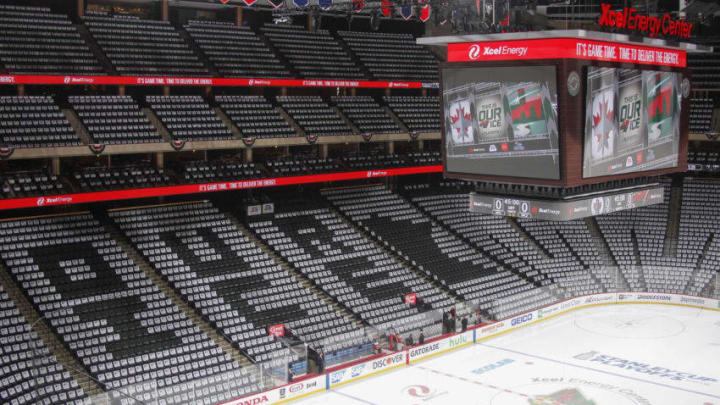
#2 Brent Burns is Sent to San Jose
The 2011 NHL Draft was held at the Minnesota Wild’s home in the friendly confines of Xcel Energy Center, and speculation leading up to the draft was running rampant. Everyone assumed GM Chuck Fletcher could try to make a big splash, but no one truly thought he would do what he did.
Brent Burns was coming off a career best season, with career highs in goals(17) and points (46), but he only had one year left on his contract and the Wild knew he would be looking for a sizeable raise.
Those two factors led to a massive draft day trade, that the State of Hockey loved on first impression. Seven years later, Wild fans look back on that day as a disappointing mistake on the part of the Minnesota Wild management and scouting team.
Brent Burns would be traded to the San Jose Sharks in exchange for Devin Setoguchi, forward prospect Charlie Coyle, and the Sharks 1st Round Draft Pick (29 Overall).

Minnesota Wild
Setoguchi was coming off 3 consecutive 20-goal seasons, and was expected to be on the upward swing of his NHL career. he had signed a brand new 3 year contract the day before the trade.
Instead, Seto regressed greatly over the 2 seasons he spent in Minnesota. He had 19 goals in his first year, 11 in the lockout shortened 12-13 season, and was traded to Winnipeg after 2 underwhelming seasons with Minnesota. He has since found himself out of the NHL altogether.
Charlie Coyle is the key here, and still could potentially turn this trade to a win. As it stands right now though, Coyle is a 3rd line player who has once surpassed 50 points in a season. After 6 NHL seasons, expectations of Coyle have greatly dropped and he has become the common subject of many NHL trade rumors in the past year.
The 1st Round Pick was used to draft Zack Phillips. Phillips would play with Charlie Coyle on the Sault Ste Marie Greyhounds top line at the end of 2011-12, and lead their team into the 2012 Memorial Cup. Phillips had 80 points in 60 games that year, Coyle had 38 points in 23 games, and expectations were high that he and Coyle could translate that success together to the NHL.
After 3 seasons in the AHL, the Minnesota Wild would trade Phillips to the Boston Bruins. He would never see an NHL game, and is now playing overseas in the Austrian Professional Hockey League.
Meanwhile, Brent Burns has developed into a consistent NHL All-star, a Norris Trophy winner, and a 2-time Nominee for the Hart trophy as the League MVP. He has 4 consecutive 60+ point seasons, and in 2016-17 he led all NHL Defensemen with 29 Goals and 76 points en route to his Norris Trophy win.
This one looked like a good move at the time, but in hindsight the Wild should have taken a more patient approach with Burns. The money that was used to pay Zach Parise and Ryan Suter their deals the following year (the same year Burns contract expired), could have easily been enough to keep Burns around for his entire career. Instead, they sold a star on the rise for prospects and a young player on the decline.
